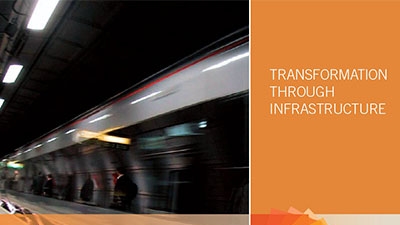A new infrastructure strategy challenges our status quo and proposes a new way forward. Since 2003, the Bank Group has been scaling up infrastructure commitments. At the peak of the global crisis, the Group emerged as the largest multilateral development financier in infrastructure, with $30 billion in new commitments. It now represents 43 percent of the Group’s assistance.
However, the Group’s client countries continue to demand more―and increasingly complex and riskier― interventions in infrastructure.
They see infrastructure as critical not only to support social progress and growth, but also to address the more systemic challenges of today’s world, from social stability to rapid urbanization, climate change, natural disasters, and food and energy security.
Finding solutions to these challenges requires tackling the complexity and inter-connectivity of sectors.
This realization―that infrastructure is more than the sum of actions by individual sectors―is shaping the global agenda, from the G-20 Summits in Korea and Cannes to the upcoming summit in Mexico and the Rio+20 conference.
The Next Frontier
In response to this evolving context, the Bank Group has developed an updated infrastructure strategy for FY12-15. The strategy specifies what the Bank Group will do over the next three years in all the infrastructure sectors―energy, information and communication technologies, transport, and water.
“This strategy update lays out a framework for how to transform the Bank Group’s engagement in infrastructure across sectors in order to respond to demands for more cross-cutting and integrated solutions,” said Rachel Kyte, vice president of sustainable development at the World Bank. “This is the next frontier for World Bank Group engagement and, if we get it right, it has the potential to accelerate growth and shift clients towards a more sustainable development trajectory.”


